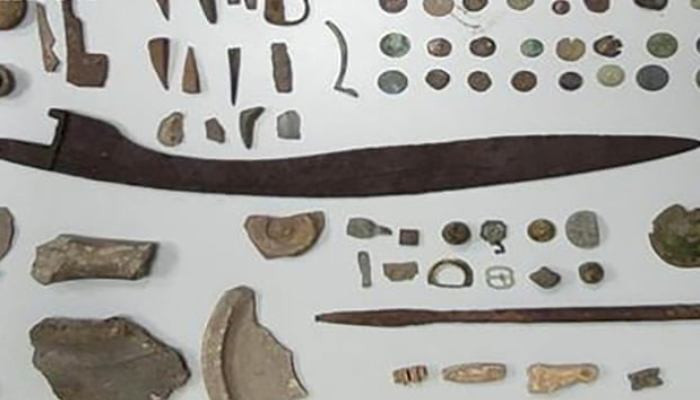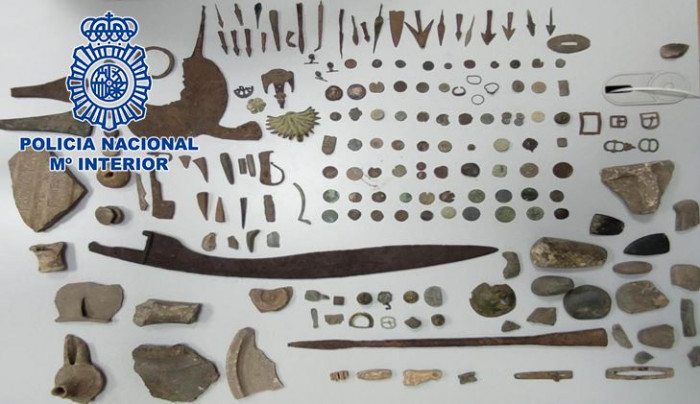Spanish police recover rare 2,000-year-old Iberian sword
 2102 Tuesday, 30 November, 2021, 22:18 More than 2,000 years after it was last wielded by a warrior somewhere on the Iberian peninsula, a rare, magnificent – and plundered – sword has been recovered by Spanish police, who tracked it down before it was sold online. The pre-Roman falcata, a double-edged, curved sword used by the Iberians between the fifth and first centuries BC, was seized along with 202 other archaeological pieces after it appeared on what Policía Nacional officers termed “a well known social media site”. The sword, which has been dated to between the third and first century BC, is particularly sought after because of the original condition of its blade. As falcatas were personal weapons, they tended to be buried with their owners, their blades deliberately bent and beaten to put them beyond the use of others. This one, however, has an intact blade. “The investigation began after officers discovered that a social media user had posted on a well known site about an Iberian falcata, with a bird’s head hilt, that had been plundered,” the Policía Nacional said in a statement. “Following various efforts to confirm the existence of the archaeological piece, determine its location and recover it, investigators managed to track down the person offering it for sale, who turned out to be a Spanish citizen living in the [Andalucían] province of Jaén.” Police said the undamaged blade of the falcata “significantly increased its value as it is very rare to find examples in this condition”. Officers also recovered scores of other pieces, including arrow heads, jewellery and ceramic fragments. The sword and the other artefacts have been confiscated and the man arrested on suspicion of misappropriation and a historical heritage offence. According to Spain’s National Archaeological Museum, falcatas, which could cut as well as stab, were complex, efficient and functional weapons that were often imbued with a symbolic value relating to the wealth and social standing of their owners. “A complete design process was used to define and tailor a falcata to the needs of its user,” reads an entry on the museum’s website relating to another falcata discovered in the neighbouring province of Córdoba. “Nothing was left to chance when it came to ensuring it did its job as well as possible … The result is a consistent and tough design. Its curved, asymmetric shape distributes the weight to concentrate force and the union with the hilt is reinforced to stop it being fragile, while the double-edge blade makes it versatile.”  |

Algeria passes law declaring French colonisation a crime
29700:12
US ambassador says 4 key documents on table in Ukraine talks
25500:06
Blackstone Buys Island Resort in Australia’s Great Barrier Reef (photo)
315Yesterday, 23:50
Brussels Wants War, Hungary Wants Peace
343Yesterday, 19:37
Romania is building a massive $1 billion Dracula theme park near Bucharest, set to open around 2027 (photo)
714Yesterday, 00:18
Top 20 of the most disliked countries in the world (photo)
52323.12.2025, 23:44
DHS offers undocumented migrants $3,000 if they self-deport by end of 2025
65023.12.2025, 20:49
Turkish Parliament approves 2-year extension of troop mandate in Libya
40823.12.2025, 20:26
